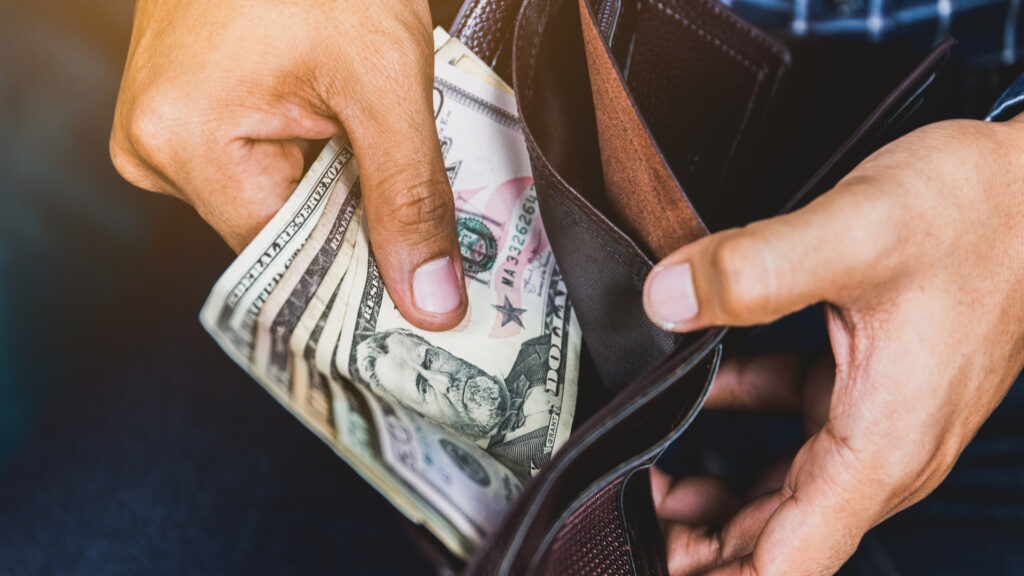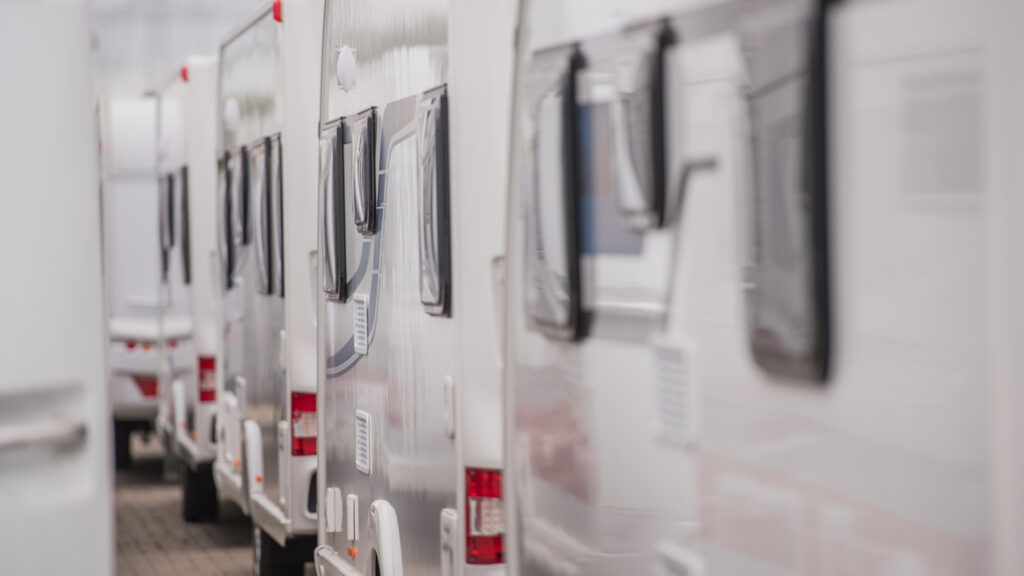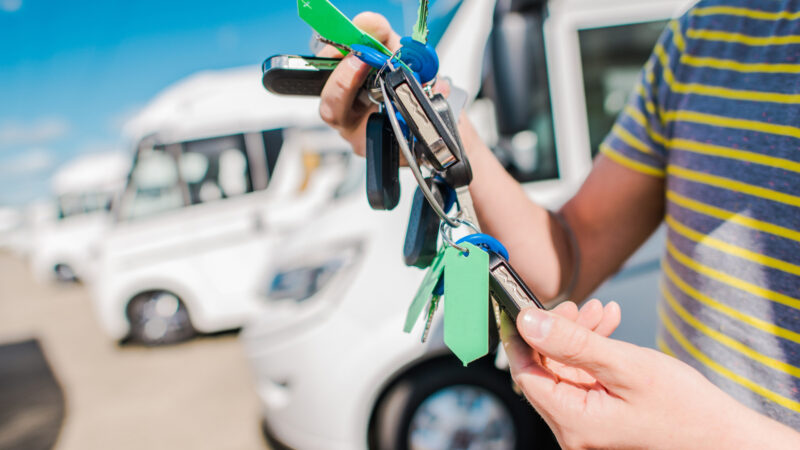Table of Contents Show
You may spend hours wandering through RV dealerships or looking through online sale postings for the rig for your dreams. But many don’t consider that, without the right financing, their RV life will remain just that, a dream. That’s why it’s crucial to understand the process, from picking the right lender to securing the best RV loan rates. So break out those calculators, and let’s dig into this vital topic.
What Is an RV Loan?
RV loans refer to any money borrowed to purchase a motorhome, trailer, or other type of RV. They’re a unique loan product because, like RVs themselves, they have some similarities to an auto loan and some similarities to a traditional mortgage. These loans can be crucial in helping RVers get their rig, as many don’t have anywhere near enough cash to purchase it outright.
How Long Is an RV Loan For?
Most folks getting an RV-specific loan will borrow the money for 10 to 20 years. These loans are generally secured by your rig itself, meaning the repo man will take it back if you don’t keep up with your payments.
This longer-term note lets RVers keep their payments relatively affordable by spreading the cost over more years than a typical vehicle loan. Unsecured loans can also finance RVs, often lasting two to 10 years. However, these usually have higher RV loan rates and shorter terms, making payments significantly higher.

What Is a Standard RV Loan Rate?
The reality is there is no “standard” RV loan rate. Rates can vary dramatically based on loan term, your credit and down payment, and the rig. Meanwhile, interest costs are rising as the Federal Reserve continues to hike rates. However, RV loan rates can still fall lower than 5% for borrowers with excellent credit, shorter terms, or other situations.
More typically, rates will range from 4% to 10%, depending on the above factors, the particular lender, and current conditions. This is among the reasons why shopping around is so important. Less-qualified or riskier buyers may face interest rates in the teens when they can get a loan at all.
Is It Easy to Get Approved for an RV Loan?
When you’re asking for tens or potentially hundreds of thousands of dollars, it’s never effortless. Buyers will usually find it more challenging to qualify for these loans than regular car or truck financing. Still, they’ll be easier to get than a home mortgage for several reasons. These include the lower dollar amount and increased ease of taking back an RV compared to a sticks-and-bricks home.
Can You Apply for an RV Loan If You Have Bad Credit?
Lousy credit can, unfortunately, make many things more difficult, including getting financing for your new rig. As a result, one or more lenders throughout the process may turn you down.
Still, don’t get discouraged. There are plenty of financing options, including those designed for people with bad or no credit. Find a lender you trust and who’s willing to work with you to tailor a loan to your situation. You may have to pay higher RV loan rates, at least initially. The good news is that paying your RV loan on time will help improve your credit, potentially allowing you to refinance to a lower rate in the future.
Best Places to Find Current RV Loan Rates and Financing
It can be overwhelming to sift through the seemingly endless list of lenders out there. They all advertise slightly different products with slightly different rates, terms, and conditions. We’ve done the work for you to find the very best choices for RV buyers of all sorts.
1. Great RV Loan
API Range: Starting at 6.95%
Best For: Large loans, borrowers with bad credit
Great RV Loan offers some of the most flexible borrowing terms of any lender, letting you borrow as little as less than $25,000 or as much as more than $10 million! Loan lengths range between five and 20 years, once again letting you tailor your loan to your situation. All you’ll need is a minimum 550 credit score to borrow, lower than some other competitors. This makes it an excellent choice for those with bad or mediocre credit, who can rest easier knowing they’re likely to be approved.

Keep in Mind: Before choosing an RV dealership, take a look at our 6 Must-Haves to help you pick the right one.
2. Bank of the West
API Range: Starting at 4.74%
Best For: Low interest rates, full-time RVers
Bank of the West is an excellent choice for those with good credit looking for some of the lowest RV loan rates they can find. Typically, you’ll need at least a 680 credit score, but those who meet that standard can borrow between $10,000 and $2 million for up to 20 years. Bank of the West is also popular for its loans targeted directly at full-time RVers, who may not be able to borrow from other lenders.
3. Alliant Credit Union
API Range: 6.49-6.94%
Best For: Full-timers, quick loans
Alliant offers the kind of competitive rates you typically find at credit unions as opposed to banks or other lenders. Full-time RVers can borrow as much as $400,000 for as long as 20 years, allowing you to tailor your RV loan to your needs. In addition, Alliant boasts that most applicants receive same-day preapproval, enabling you to move quickly if you find a rig that fits your needs.
4. LightStream
API Range: 4.49-11.89%
Best For: Low interest rates, quick loans, unsecured loans
Lightstream prides itself on simple, straightforward lending at lower rates. RVers can get loans from $5,000 to $100,000, which are also unsecured, meaning you don’t need to put up any property as collateral. Still, you’ll need good credit to ensure approval for these competitive loans. There are also no hidden fees or prepayment penalties should you decide to pay off your loan early.

5. Truist RV Loans
API Range: 6.67-9.25%
Best For: Part-time RVers, large loans
Truist has a reputation as a great lender for luxury and other high-end RVs and campers. It’s crucial to note that Truist doesn’t finance RVs that are used full-time as your home, which makes this a part-timer-only option. Truist also offers loans for boats and other watercraft, making it a great choice for those who like to hit the lakes or other waterways.
6. Southeast Financial
API Range: Starting at 5.74%
Best For: Used/older RVs, bad credit
Many lenders will charge higher RV loan rates to borrow for an older motorhome or trailer. They may not lend at all on rigs beyond a certain age or mileage. That’s not the case at Southeast Financial, which will lend on just about any functional RV. The company is also known for working with borrowers with credit scores of 600 or lower. These are folks who may not be able to find financing elsewhere. Loan amounts can range from as little as $15,000 to as much as $4 million.
Pro Tip: We’ve shown you where to get your RV loans, but you’ll need to know these important Facts To Know To Secure RV Financing
7. Dealer Financing
One of the most obvious ways to finance your RV is with the dealer you’re buying from. This can be an excellent option for two reasons. First, you may find them more willing to work with you on financing to ensure the sale goes through. Second, they’ll have established relationships with banks and other financing sources.
In addition, the high volume the dealership brings to these lenders could result in better rates or special deals for customers as an incentive.
Purchase Your Dream RV With the Right Loan
Getting the right financing can be the difference between driving away in the RV of your dreams and a beat-up old clunker. While RV loan rates are among the most important things to consider, they’re not the only determining factor in what makes a loan right for you. Keep this list of top lenders in mind, and you’ll be nearly certain to find the financing you need for your next RV purchase.






